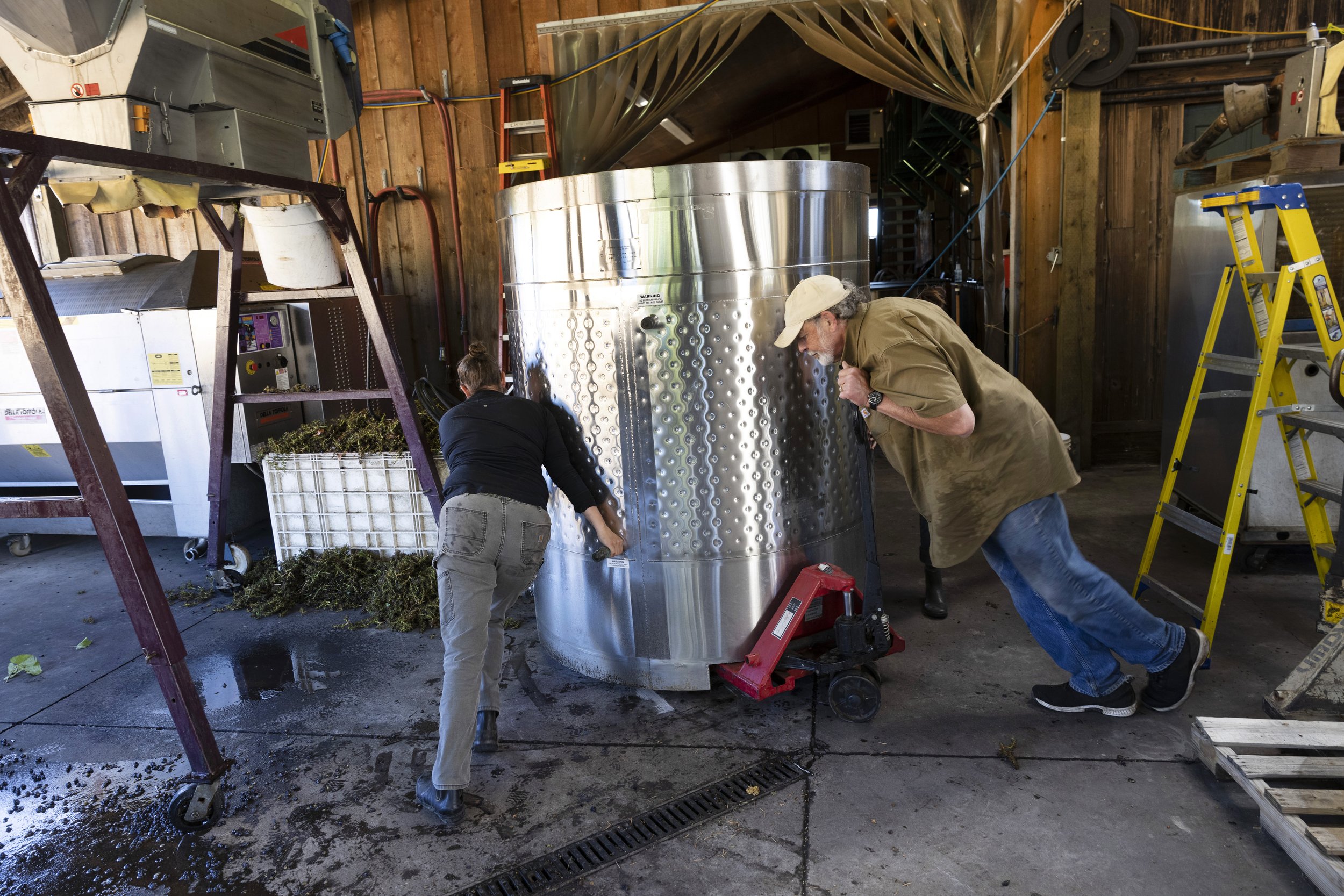A WHIZZ AROUND WILLAMETTE: Jancis Robinson, jancisrobinson.com
Winemaking team, Savannah Mills and Doug Tunnell, escort a fermenter into place during harvest. Photo by David Kennerly
A WHIZZ AROUND WILLAMETTE: JANCIS ROBINSON VISITS
Brick House
In 1990 Doug and Melissa Tunnell were relatively early arrivals in the Willamette Valley, he recovering from a long stint reporting on the Middle East for CBS. Their converted barn in one of the upper reaches of the Ribbon Ridge AVA at 400–500 ft (120–150 m) elevation is the most congenial winery I think I have ever visited with its beautiful rugs on the foor and antiques everywhere.
I must say I rather lost my heart to Ribbon Ridge when visiting Patricia Green Cellars and Sequitur on the valley foor below. It’s a quiet, green, almost hidden little valley which, Tunnell told me, had been a Native American burial ground roamed by herds of elk. Soils are marine sedimentary.
Tunnell seemed happy with his current set-up. In 2014 they reached maximum production – 5,200 cases – but are now down to 3,500, with Melissa’s niece Savannah Mills as assistant winemaker and Kerry Anne Erwin, a goddaughter, running sales.
We drove past his beloved original Gamay vineyard, which he has had to pull out because of the phylloxera that has plagued so many of the original, ungrafted, plantings in Oregon. (I remember Luisa Ponzi coming back from working in France many years ago and telling her family they really ought to be using rootstocks.) They are replanting with supposedly superior Gamay cuttings. Production of the 2022 vintage of the popular Brick House Gamay was just 100 cases as opposed to the usual 800.
Brick House does not buy-in fruit, and has no formula for the proportion of stems discarded, which could be anything from 0 to 100%. Tunnell has done considerable work on their own indigenous vineyard yeast, having the DNA of yeast on the grapes and on the bark of their vineyard oaks analysed and discovering they are the same strain. Seven or eight years ago he realised that DNA technology wasn’t too expensive so ‘had fun’ doing all these experiments. Italian researcher Duccio Cavalieri discovered in 2016 that the gut of a wasp, and possibly other insects, provides the ideal environment for Saccharomyces spores to mingle and mate. They are released in vegetative form when the mother insect feeds her young and are then spread back into the vineyard because insects target the most nutritious thing around, ripe grapes presumably. Quite how they make their way into the tree bark is not clear. Perhaps insects appreciate roughage.
Tunnell has never used a bought-in, cultured yeast and has never had a problem with a fermentation, although he does keep frozen samples of fermenting juice, which contains the yeast in vegetative form, as a safety measure.

